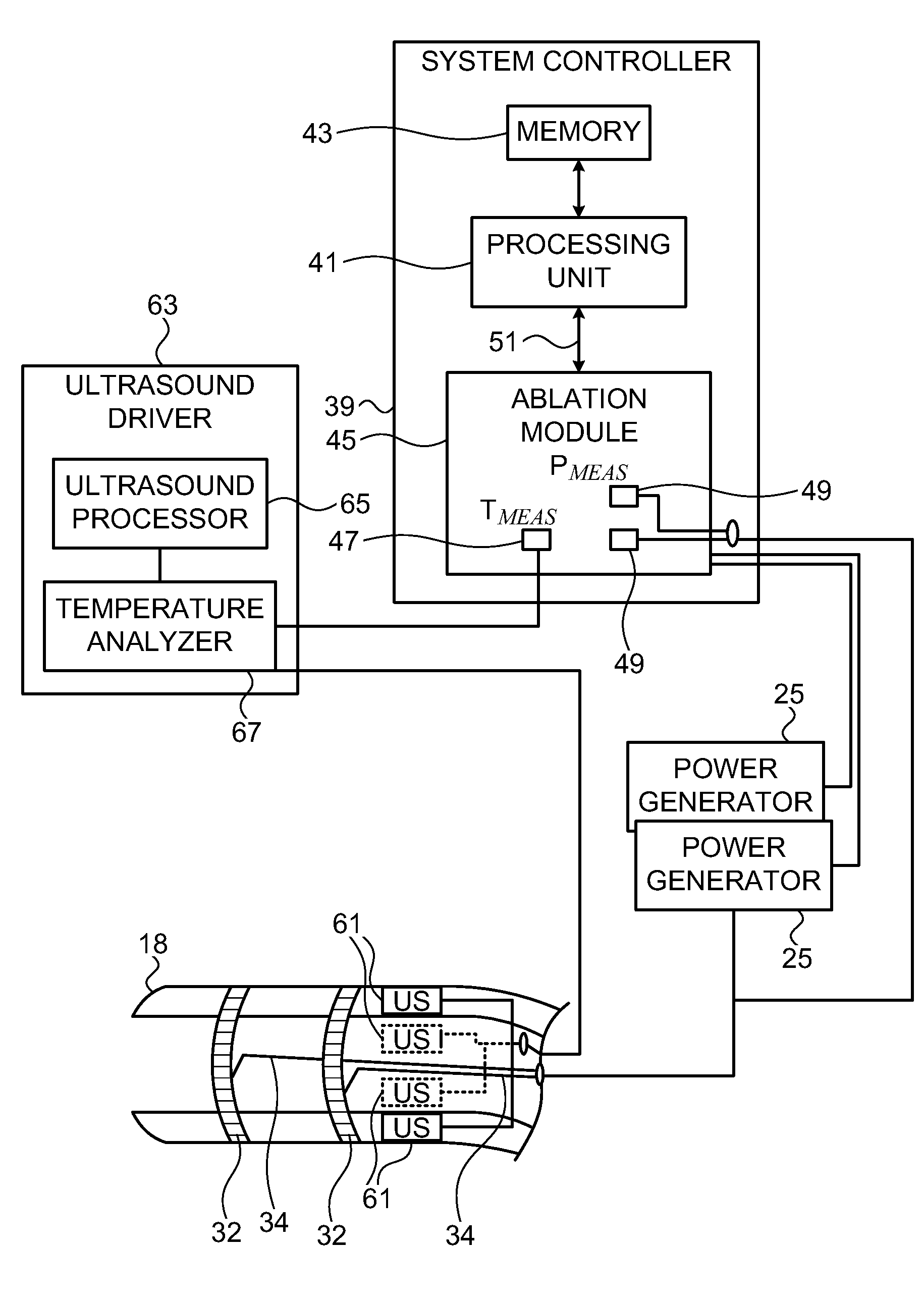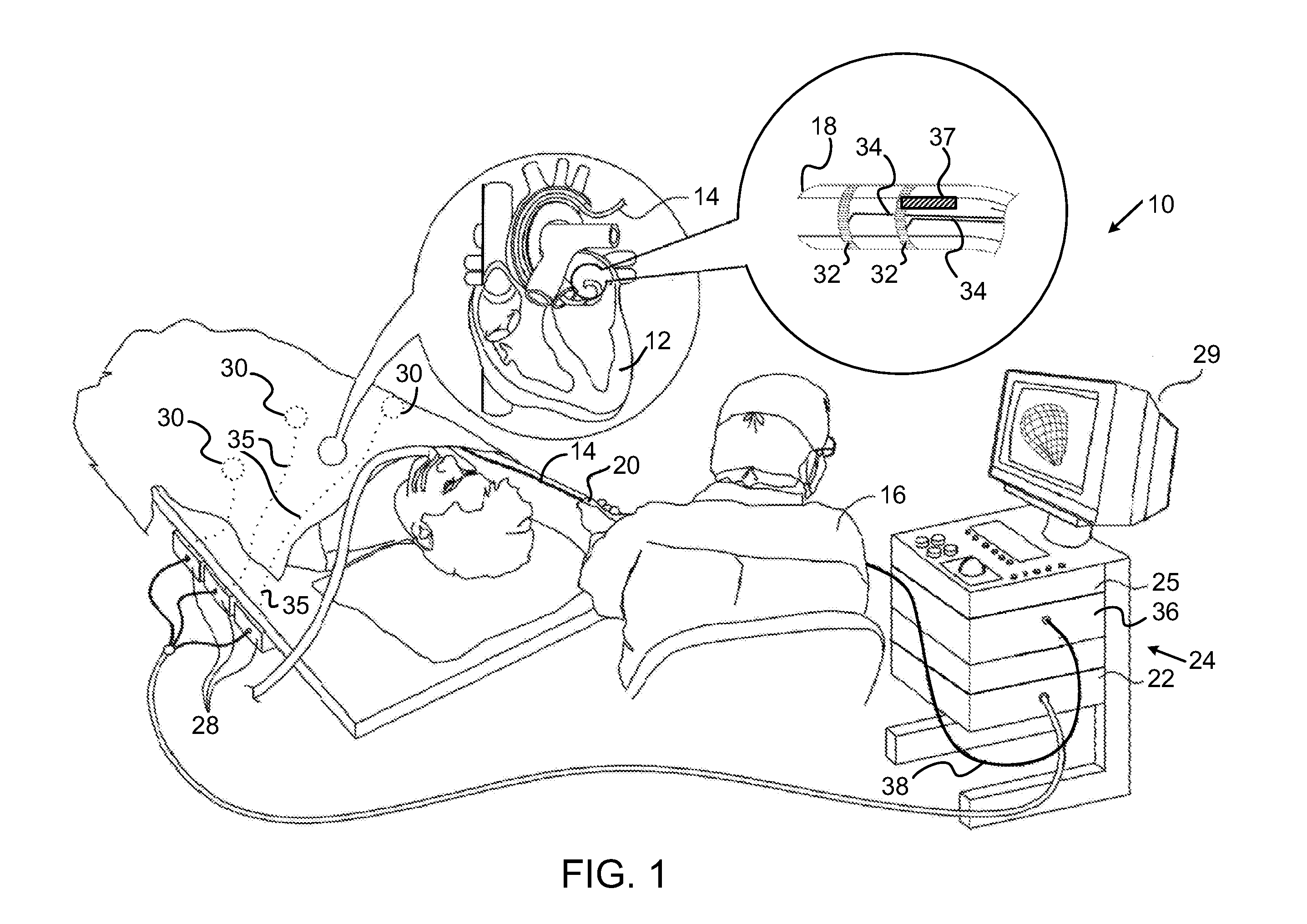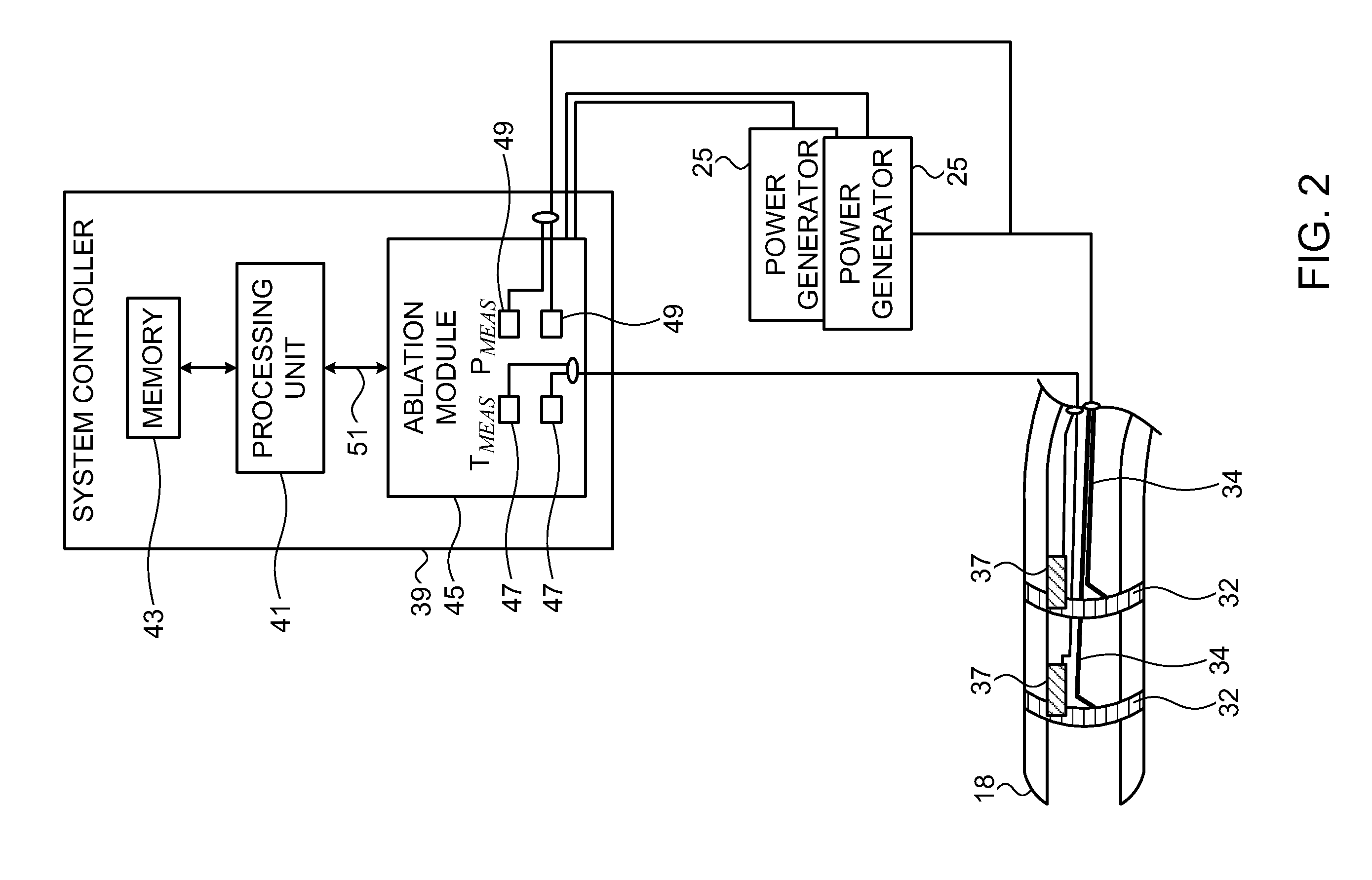System for controlling tissue ablation using temperature sensors
a temperature sensor and tissue technology, applied in the field of tissue ablation, can solve the problems of excessive local heating, unsatisfactory effects of medical procedures, and need too much time, and achieve the effects of effective ablation of abnormal tissue focus, blocking aberrant conduction pattern, and high impedan
- Summary
- Abstract
- Description
- Claims
- Application Information
AI Technical Summary
Benefits of technology
Problems solved by technology
Method used
Image
Examples
embodiment 1
Alternate Embodiment 1
[0073]Reference is now made to FIG. 3, which is a schematic illustration of the controller 39 for the ablation power generator 25 (FIG. 1), which is constructed and operative in accordance with an alternate embodiment of the invention. In this embodiment the temperature sensors 37 (FIG. 2) may be omitted, which reduces manufacturing costs. Indication of the tissue temperature can be obtained by concurrently performing magnetic resonance imaging (MRI), directed at the target tissue. Dependencies of T1, T2, and proton density on temperature are used to relate change in signal strength to temperature.
[0074]MRI signals from field magnets 53 are acquired by a reconstruction processor 55, which is enhanced by a peak calculation module 57 that is linked to a temperature analyzer 59. The temperature analyzer 59 provides a thermometry signal to the port 47 of the ablation module 45. Thus, the MRI system operates as a temperature sensor for purpose of ablation control. T...
embodiment 2
Alternate Embodiment 2
[0075]Reference is now made to FIG. 4, which is a schematic illustration of the controller 39 for the ablation power generator 25 (FIG. 1), which is constructed and operative in accordance with yet another alternate embodiment of the invention. In this embodiment the temperature sensors 37 (FIG. 2) may be omitted. Tissue temperature are measured by assessing thickness of the tissues being ablated, using the teachings described in commonly assigned U.S. application Ser. No. 11 / 357,512, entitled “Lesion Assessment by Pacing”, which is hereby incorporated by reference.
[0076]An array of ultrasound transducers 61 is placed generally near the distal tip 18 of the catheter 14 (FIG. 1), and are energized by an ultrasound driver 63. One example of a suitable ultrasound driver that can be used for this purpose is an AN2300™ ultrasound system produced by Analogic Corporation, Centennial Drive, Peabody, Mass. Ultrasound driver 63 may support different imaging modes such as...
embodiment 3
Alternate Embodiment 3
[0078]The energy sources in the previous embodiments produce RF energy. However, the invention can be carried out using other energy types. For example, in the embodiment of FIG. 4, the electrodes 32 (FIG. 2) can be omitted, and the transducers 61 configured to emit higher levels of ultrasound energy as taught in commonly assigned U.S. Pat. No. 7,156,816, which is herein incorporated by reference.
[0079]Alternatively, the source of ablative energy may be a laser, as disclosed in commonly assigned U.S. Pat. No. 6,997,924, which is herein incorporated by reference.
[0080]In either case temperature may be measured using any of the embodiments disclosed above.
PUM
 Login to View More
Login to View More Abstract
Description
Claims
Application Information
 Login to View More
Login to View More - R&D
- Intellectual Property
- Life Sciences
- Materials
- Tech Scout
- Unparalleled Data Quality
- Higher Quality Content
- 60% Fewer Hallucinations
Browse by: Latest US Patents, China's latest patents, Technical Efficacy Thesaurus, Application Domain, Technology Topic, Popular Technical Reports.
© 2025 PatSnap. All rights reserved.Legal|Privacy policy|Modern Slavery Act Transparency Statement|Sitemap|About US| Contact US: help@patsnap.com



